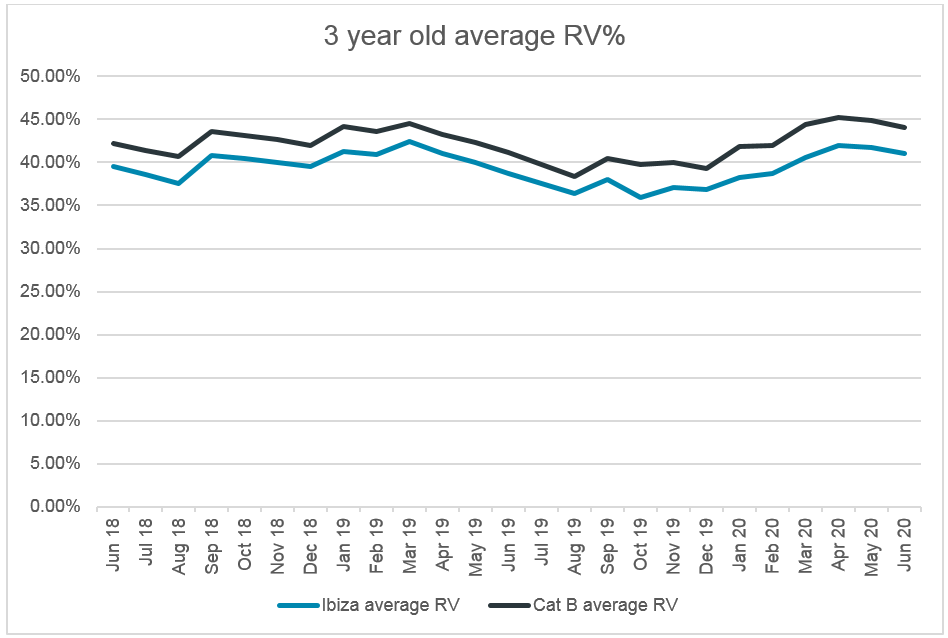Introduced at the Paris Motor Show in 1984, the SEAT Ibiza reached UK shores a year later. Initially it met with a lukewarm reception, and was viewed as being at the budget end of the market competing with Hyundai’s Pony, Lada’s Riva, Skoda’s Estelle and FSO’s Polonez. Over time, the perception of the Ibiza has changed. SEAT continues to update and renew the Ibiza range with around six million units sold worldwide so far.
History of the SEAT Ibiza
The Ibiza was the first fully independent model offered by SEAT after a long collaboration with Fiat, making the SEAT Panda, later being renamed the SEAT Marbella essentially a Fiat Panda.
Named after the Balearic Island, the Ibiza launched with excellent levels of specification including; power locking doors, electric windows and sunroof. These items were highly regarded at the time for a small car. The styling was by Giorgetto Giugiaro’s Italdesign, and prepared for production by the German manufacturer Karmann. The powertrain was developed in collaboration with Porsche and despite Porsche’s direct involvement, SEAT had to pay royalties to put the ‘System Porsche’ inscription on the engine blocks and down the flanks of the car.
The Mk1 base model’s UK list price of around £4,995, was very competitive even in the mid-eighties. The competitive pricing, design and engines proved to be a winning formula allowing SEAT to sell 1,342,001 units of the first generation over 10 years of production. In a final swansong in 1992, the Mk1 Ibiza was the official car of the Barcelona Olympics.
In 1986 Volkswagen became the majority shareholder in SEAT, introducing enhanced parts and production processes to the Spanish brand. In 1993, the Mk2 Ibiza launched, styled again by Giorgetto Giugiaro at Italdesign, whilst also benefitting from Volkswagen’s modified MK3 Golf platform. Engines included the 2.0 litre 150PS unit from the Golf GTi making its debut in the Cupra version. This gave SEAT an advantage over its stablemate, the Volkswagen Polo, which could not accommodate this engine. Additionally, diesel TDi units from Volkswagen made for some very fast and frugal versions. Mk2 production ended in 2002.
Designed in house by Walter de’Silva, the Mk3 launched in 2002 was a more overt evolution. Growing in size, it was now capable of comfortably accommodating five adults whilst also gaining more boot space. Only produced for six years, this generation featured the biggest step change in design, dynamics and features. The Cupra was a notable addition to the range including a 1.9 TDi 160PS / 330 Nm diesel variant, with excellent driving dynamics. What Car? Supermini winner for three years running showed that the Ibiza Mk3 was a serious contender in the Supermini sector.
In September 2005, Luc Donckerwolke was appointed SEAT Design Director. Previously he was responsible for the 2001 Lamborghini Diablo VT 6.0, 2002 Lamborghini Murciélago and 2004 Lamborghini Gallardo. Bringing strong design credentials to the brand, the 2008 Mk4 Ibiza launched with sharper styling and a new estate model named ST in 2010. This was a notable volume benefit for the range, especially as small estate cars continue to be a rather uncommon offering in UK model line-ups. The Mk4 ran successfully until 2017.
The Mk5 launched in 2017. It was a gentle but effective update with all dimensions changed, yet it kept much of the styling cues from the previous generation. The specification levels and dynamics are among the highest in the Supermini sector.
Residual values
The Ibiza has represented excellent value for money since its launch 36 years ago. This value for money also extends to the used market. Expressing average residual values as a percentage of the original cost new price it is possible to compare the Ibiza with the Supermini segment as a whole. The Ibiza sits just below the average, which considering the segment includes some of the UK’s most popular cars such as the Ford Fiesta and the Volkswagen Polo, we should conclude that the Ibiza’s residual value performance is very good, whilst from a consumer’s point of view, it offers excellent value for money.




 Close
Close